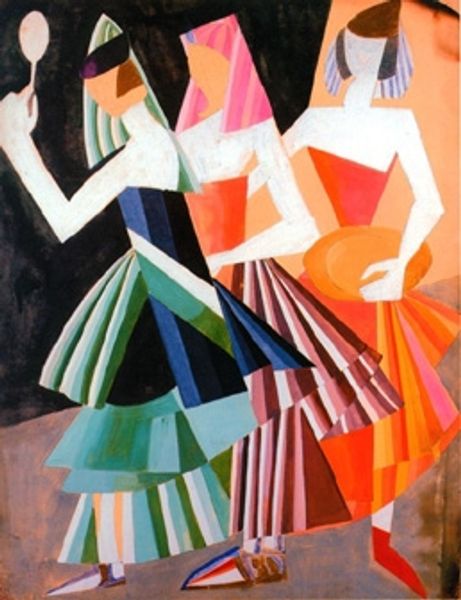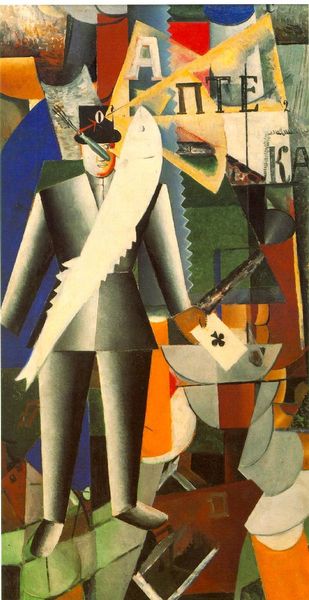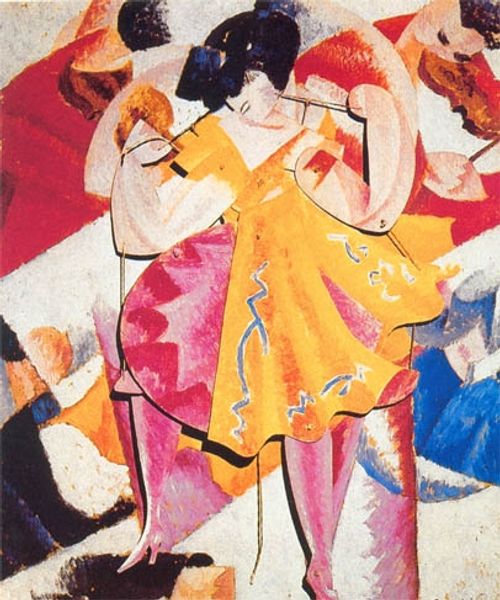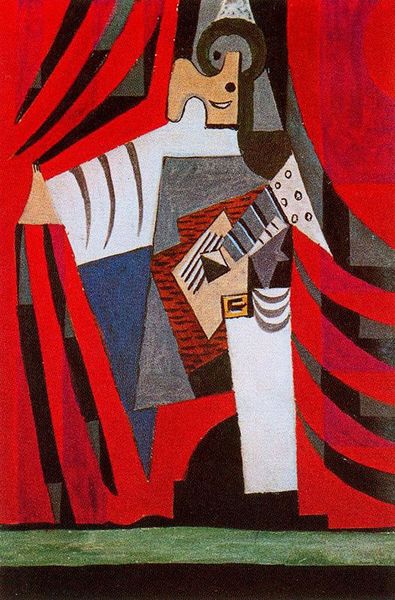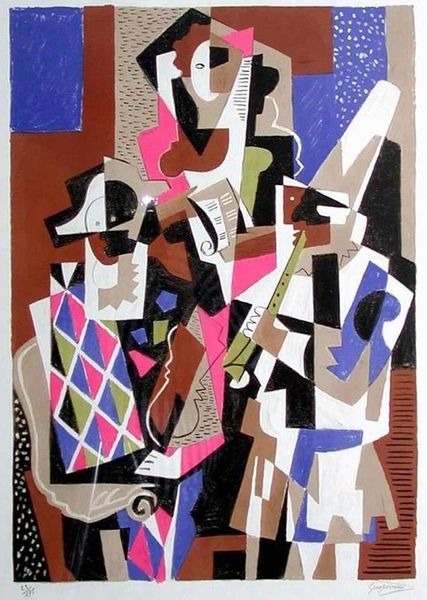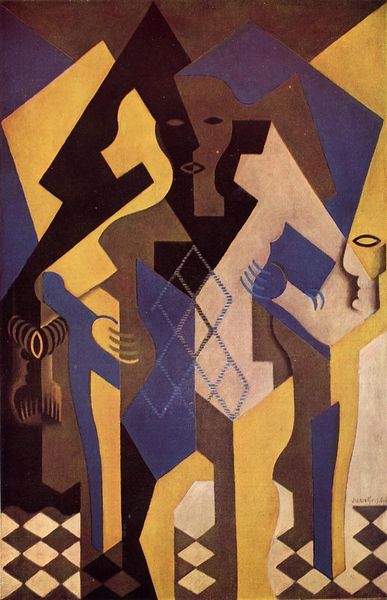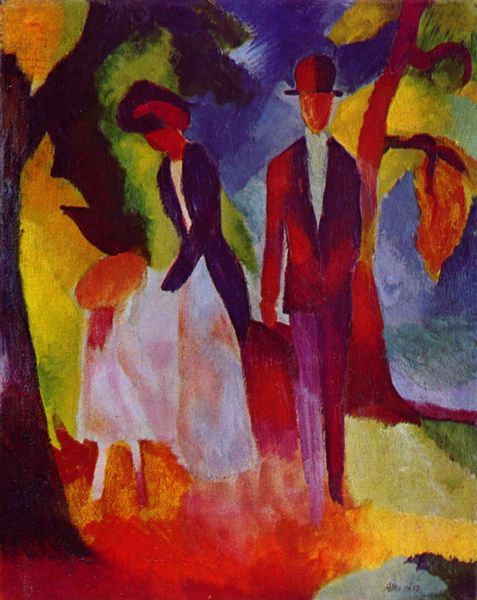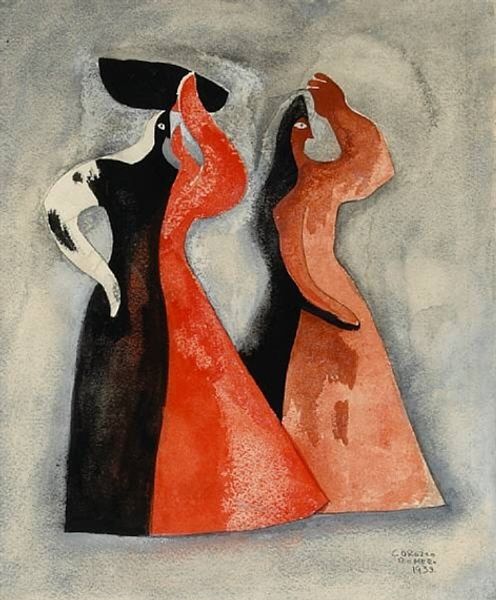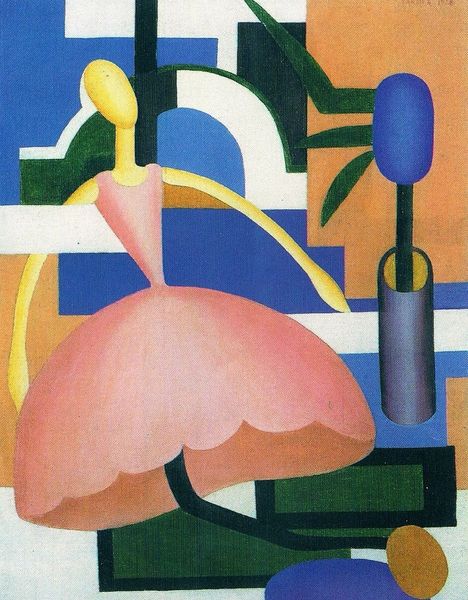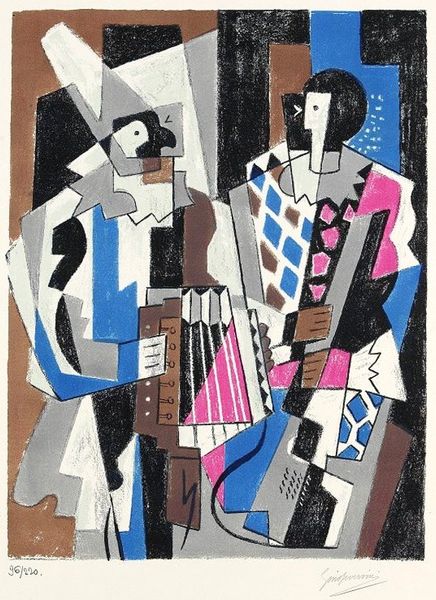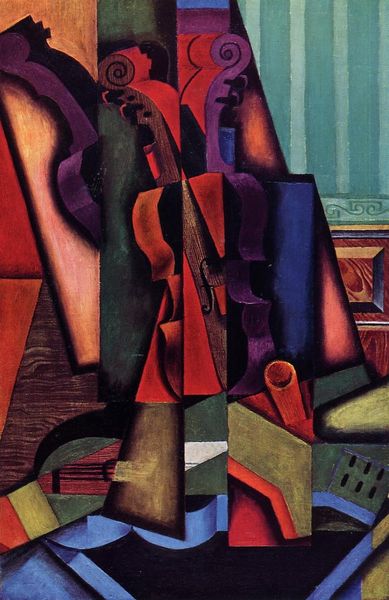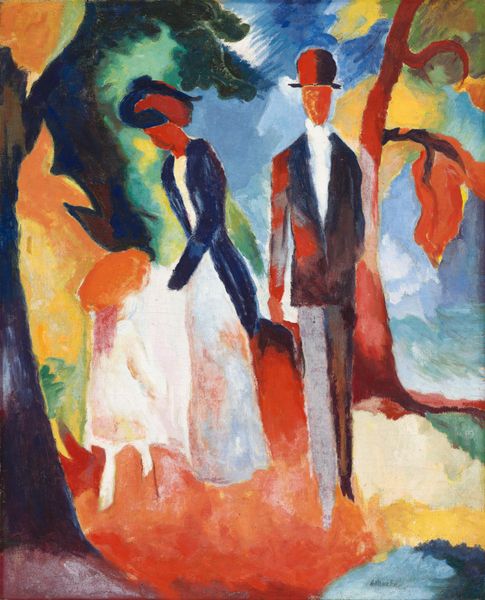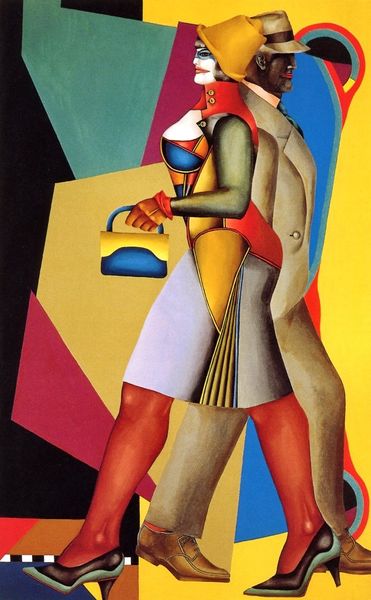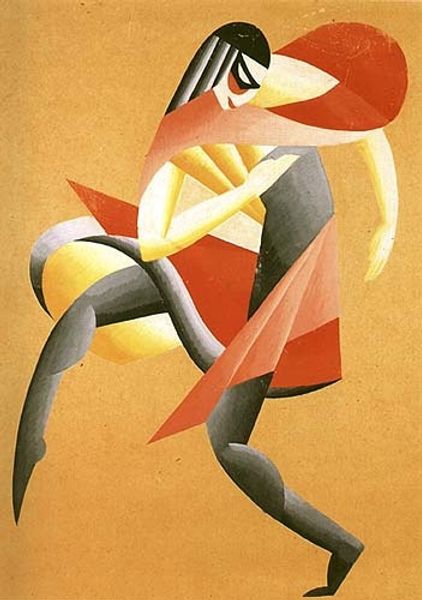
Copyright: Public domain
Curator: Before us, we have Aleksandra Ekster’s "Costume design for Dance of the Seven Veils," a mixed media piece dating to 1917. Editor: My first impression is that it is boldly geometric and theatrical. There's an echo of both Futurism and nascent Art Deco about it. I sense a potent atmosphere conveyed through dynamic shapes, vertical lines and strong colors. Curator: Absolutely. Ekster, deeply embedded in the avant-garde circles of her time, synthesized Cubist, Futurist, and Constructivist principles to revolutionize stage design. Note how she’s fractured and reassembled the figures into a series of planes. Editor: Indeed, the geometric configuration seems crucial for translating emotion. Are we meant to experience them as powerful? Vulnerable? I feel a potent psychological depth emerging from these non-naturalistic forms. Curator: Well, consider that this work was made during a period of immense social upheaval in Russia. Theater and costume design at that time functioned as a testing ground for new aesthetic and social visions, it's far more than ornamentation. Editor: A powerful synthesis! The composition, for example, utilizes color and fragmented forms to visually evoke movement and potentially highlight aspects such as gender roles in flux, perhaps within the ballet and society as a whole? Curator: Precisely, and the costumes are not just aesthetically innovative, but symbolically charged. Through such avant-garde forms, theater became a crucible for exploring changing attitudes. Editor: Examining it with a sensitivity to semiotics, the forms symbolize a dramatic tension that speaks to modern art’s revolutionary impulse and challenges audiences to interpret familiar imagery. Curator: These kinds of explorations push us to reconsider what theater design can achieve beyond simple visuals; to question not only artistic conventions but also to mirror our broader reality. Editor: Overall, it reveals that we're confronted not just with a costume sketch, but rather an entire historical manifesto of that period's search for visual meaning and artistic evolution.
Comments
No comments
Be the first to comment and join the conversation on the ultimate creative platform.
